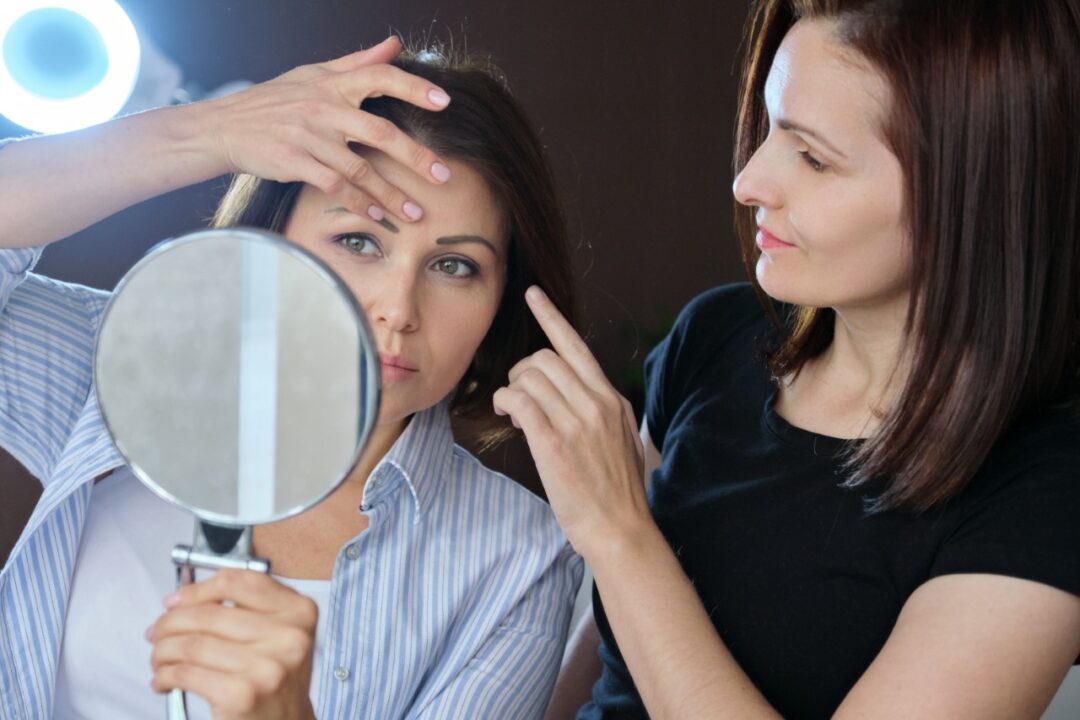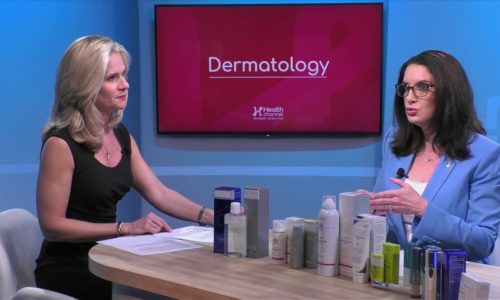Why is my skin changing as I age? |

For regular health tip readers, you may have noticed that I introduced a topic (anti-aging strategies for facial skin) and then never completed parts II and III. Sorry for the delay. As I was saying in my original health tip Anti-Aging Strategies For Facial Skin, Part 1 (you might want to re-read this), that our skin becomes dry, thin, inelastic, and prone to cancer as we age. There are some products and procedures that can help to slow or reverse this process to some degree. I will organize the products by their purported effects:
1. Removing the dry, dead layer of outer skin
Our skin is constantly replacing itself, as dead skin cells slough off and fresh ones grow underneath. If you’ve noticed how beautiful baby skin is, that’s because their cells turn over every three to five days. Compare that to turnover rates in teenage skin (about 14-21 days), middle aged skin (45-60 days) or older skin >50 years (60-90 days). No wonder our skin doesn’t look baby-fresh as we age. In order to stimulate skin turnover, there are a few things we can do. Firstly, we need to remove the dry, dead layer of skin so that fresh cells can replace them. This can be achieved through mechanical (such as scrubs and rough textured surfaces – dermabrasion) or chemical means (such as acidic or enzymatic removal).
There are hundreds of different products that can help to remove dead skin cells. Over-the-counter scrubs, mitts, pumice stones, Clarisonic brushes, acid washes, and enzymatic peels are readily available. Facial skin is thinner than other parts of the body, and it’s important to be gentle with it so as not to damage the deeper layers while removing the dead cells on top.
If you can afford it, I recommend seeing a skincare professional (a cosmetic dermatologist or his/her aesthetician) to optimize your anti-aging skincare regime. They can be very helpful in recommending products that have been scientifically tested, and contain prescription strength ingredients that will do the job they claim to do. Depending on your individual skin’s properties (degree of oiliness or dryness, acne, wrinkles or discoloration), they can recommend a regimen that works best with your skin type.
Personally, I like to use a gentle facial exfoliation cream four times a week, with a daily alpha-hydroxy acid moisturizer. This regimen combines a mechanical exfoliation with a mild chemical peel. There are more intense skin rejuvenating procedures that are provided by dermatologists, but as far as a good basic starting regimen – try a mild mechanical and chemical combo.
2. Increasing skin cell turnover
Vitamin A products (including retinol, adapalene, and tretinoin) work by stimulating collagen synthesis in the deeper skin layers, reducing inflammation, and triggering skin turnover. They are helpful in reducing wrinkles, treating acne, and adding back some thickness and smoothness to aging skin. Over-the-counter products contain lower doses of vitamin A than their prescription counter parts, and take longer to show an effect.
Some people are more sensitive to Vitamin A products than others, and experience some redness and flakiness when they first begin using it. Retinol and vitamin A-derivative creams break down in the bright light or in the presence of acid, so it’s important to apply them at night and without other creams that have salicylic, hyaluronic, glycolic or other acids in them. Because Vitamin A thins the dry, outer layer of skin, sun-sensitivity is also common. It is important to use sunscreen, especially higher SPF types, if you use Vitamin A creams regularly.
Dermatologists often say that if you only use one anti-aging product on your face, it should be a Vitamin A-derived cream. The results from retinol type creams are more pronounced than with most other interventions.
3. Hydrating the healthy skin
As we age, our skin tends to lose its moisture content as well as cell metabolism slows, hormones change, and the outer skin layer fractures. Restoring the water content to our skin is helped by avoiding harsh soaps that dry the skin further, drinking sufficient water, and applying non-comedogenic (meaning, creams that don’t block pores) products to the skin surface. Facial moisturizer creams that are generally recommended by dermatologists may contain urea, hyaluronic acid, lipids, sunscreens, and anti-oxidants (such as Vitamin C).
Next week we’ll review products and treatments for:
1. Stimulating collagen production
2. Reducing redness
3. Reducing dark spots
4. Reducing wrinkles
References:
https://www.ncbi.nlm.nih.gov/pmc/articles/PMC3583891/
https://www.aad.org/public/skin-hair-nails/younger-skin/selecting-anti-aging-products
http://www.mayoclinic.org/diseases-conditions/wrinkles/in-depth/wrinkle-creams/art-20047463
If you have any more questions just Ask Hanna, our health advisors are here to help.
Dr. Val Jones MD – Health Tip Content Editor
Image: ©Shutterstock / VH-studio








